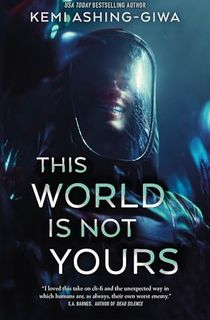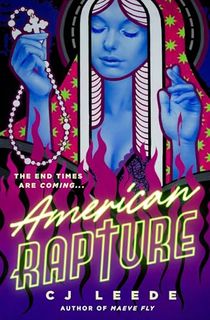When science fiction and horror join forces, what unfolds is the best of both genres—the unknown and the uncanny weave seamlessly into the fabric of scientific exploration, unleashing a sense of dread and awe.
This unique blend combines the speculative and futuristic elements of science fiction with the visceral and fear-inducing aspects of horror. In this genre, technological advancements, extraterrestrial beings, or dystopian futures serve as the backdrop for eerie and suspenseful narratives.
Just look at Richard Matheson’s I Am Legend, which blended the “last person standing” narrative with a pseudo-zombie-vampire spin. Or Michael Crichton’s Jurassic Park, a thriller that blends big sci-fi what-ifs with the horror of the idea that humanity is suddenly no longer at the top of the food chain. Both are classics—and perfectly exemplify that sci-fi horror blend.
We decided to dive in and find some equally exciting and memorable tomes of sci-fi terror for those seeking something different.

This World Is Not Yours
Amara and her fiancée, Vinh, have been weighed down by the past for too long. Joined by Amara’s childhood friend Jesse, they set out to make a new start for themselves on the experimental extraterrestrial colony of New Belaforme.
New Belaforme is beautiful, but if they’re not careful, it can also be deadly: a mysterious substance known as the “Gray” routinely purges the planet of invasive organisms.
So far, humans have managed to escape that designation. Soon after Amara, Vinh, and Jesse arrive, however, a rival colony on the planet lays siege to theirs, drawing the Gray’s attention in the process.
The rival colony and the Gray are formidable threats to the three voyagers, but perhaps most detrimental to their survival is the deterioration of their own relationships, as jealousy, lust, and ambition pit them against each other and threaten to tear them apart from within

American Rapture
Sixteen-year-old Sophie has been shielded from the world all her life, raised in a small midwestern town by strict Catholic parents. Still, she’s sure she understands enough about the world to know what’s right in it, and what’s wrong.
Then a virus sweeps across America, a virus that makes the infected wild with lust. Now, Sophie must journey across the hellscape of the Midwest to find her family while the world around her descends into lascivious madness.
From the mind behind Maeve Fly, winner of the Golden Poppy Octavia E. Butler Award, comes a pandemic story unlike any other.

Crypt of the Moon Spider (The Lunar Gothic Trilogy Book 1)
The year is 1923, and Veronica Brinkley has just checked into Barrowfield Home for Treatment of the Melancholy, a renowned mental facility situated on none other than the moon.
This is no coincidence: years ago, an enormous spider once lived deep in the moon’s caves, a spider whose silk was said to grant its worshippers with tremendous power.
The spider, as far as everyone is aware, is long gone, but Dr. Barrington Cull has harnessed the power of its silk to banish troublesome thoughts and ideas for good. Dr. Cull’s treatment is said to be fool-proof, but the more time Veronica spends at Barrowfield, the more sinister the operation appears.
Is Dr. Cull up to no good? Or is everyone at Barrowfield caught in someone—or something—else’s web.

The Strange
Nathan Ballingrud carved out his own pristine corner through his short stories, most famously adapted into the television series Monsterland. In The Strange, Ballingrud’s debut novel, he takes readers into the realm of the extraterrestrial for a slice of sci-fi horror that also blends in elements of the western. Anabelle Crisp is a teenager living on Mars trekking out into the vastness of the planet seeking vengeance.
Days on Mars consist of mining for something called “the Strange.” Settlers and gangs everywhere are hellbent on owning a piece of the planet and on finding power in what is still a relatively untapped world. Anabelle’s vengeance fuels her journey, and amid a very vibrant narrative landscape, Ballingrud succeeds in blending sci-fi and horror with a decidedly rare spice blend of western that hasn’t been achieved as well since Ray Bradbury’s The Martian Chronicles.

The Murders of Molly Southbourne
I love a good concept. The kind that within a few words, you’re already sold on the pitch alone. Thompson’s The Murders of Molly Southbourne is one of those books. The eponymously named Molly Southbourne has a bit of a “gift”: When she bleeds a murderer is born. And not just any murderer: Molly’s murderers are intent on killing her.
Like some far more surreal rendition of the Japanese horror film Survival Style 5+, Molly is afflicted with the unfortunate impediment of having to battle other mollys. Living a life where your biggest enemy are variations of yourself is enough for any reader looking for a narrative puzzle to mull over while the pages turn quickly. Thompson has written a slice of sci-fi horror that takes it beyond the personal; it points the lens on the person and the stage.

The Book of Strange New Things
In The Book of Strange New Things, readers are introduced to Peter, a religious man who takes a mission to an entirely different planet, where its people have been lost on a spiritual level and are facing a deadly illness. Peter reads from the Bible and begins to guide them through expansive spiritual concepts. While his mission is a success, back on earth, things are bordering on cataclysmic. When Peter hears from his wife, his distance from his home translates to desperate feelings of hopelessness.
The Book of Strange New Things takes themes of religion and loss to a whole new level. Faber will probably always be known for his book, Under the Skin, which was adapted into the film of the same name starring Scarlet Johansson, but with The Book of Strange New Things, he managed to conceive of an epic, masterful tale of sci-fi horror that deftly blurs all genre boundaries to create something that readers willing to give the tome a chance will surely come out of the experience changed.

Into the Drowning Deep

Who Goes There?
Crazy to think that most fail to realize that the horror classic The Thing was, in fact, an adaptation of a book. The source material is an unassuming title, Who Goes There?, by John W. Campbell. Much like the film, the tale involves an Antarctic research base that discovers the mysterious frozen body of an alien that absorbs and mimics all living things.
The book contains some of the same fears and open-ended sci-fi questions that the film (well, both films, the original adaptation and John Carpenter’s beloved version) contains, including the sheer terror of there being an entity that can so quickly consume life and continue its spread. Who Goes There? is a short novel that demands being read by fans of the film; though it no longer completely holds up to the tests of time, the underlying genius and the story itself stands tall as a pristine example of sci-fi horror.

Six Wakes
It’s like Event Horizon meets Clue. Or Among Us. That’s what I thought immediately upon encountering Mur Lafferty’s sci-fi horror novel, Six Wakes. To some degree, the first impression is apt, yet of course, there’s far more to what goes down in Six Wakes. The basics are profoundly insane: There’s a ship where a vicious cycle repeats itself. Clones of a previously murdered crew seek out to find the murderer before they, themselves, are murdered.
Readers are introduced to protagonist Maria Arena who awakens as a new clone carrying only one memory: how she died. She isn’t alone, with the other clones awakening the moment the previous has perished, left with the same omissions and terrible fate. Lafferty manages to take the wild premise and create quite the wild ride all the while exploring common sci-fi pontifications while keenly sticking to the overarching thrill that anchors the conflict – the mystery of the murderer, and the cycle of death and new clone itself calling to the coldness that comes when humanity loses all that made it human.
.png?w=3840)








